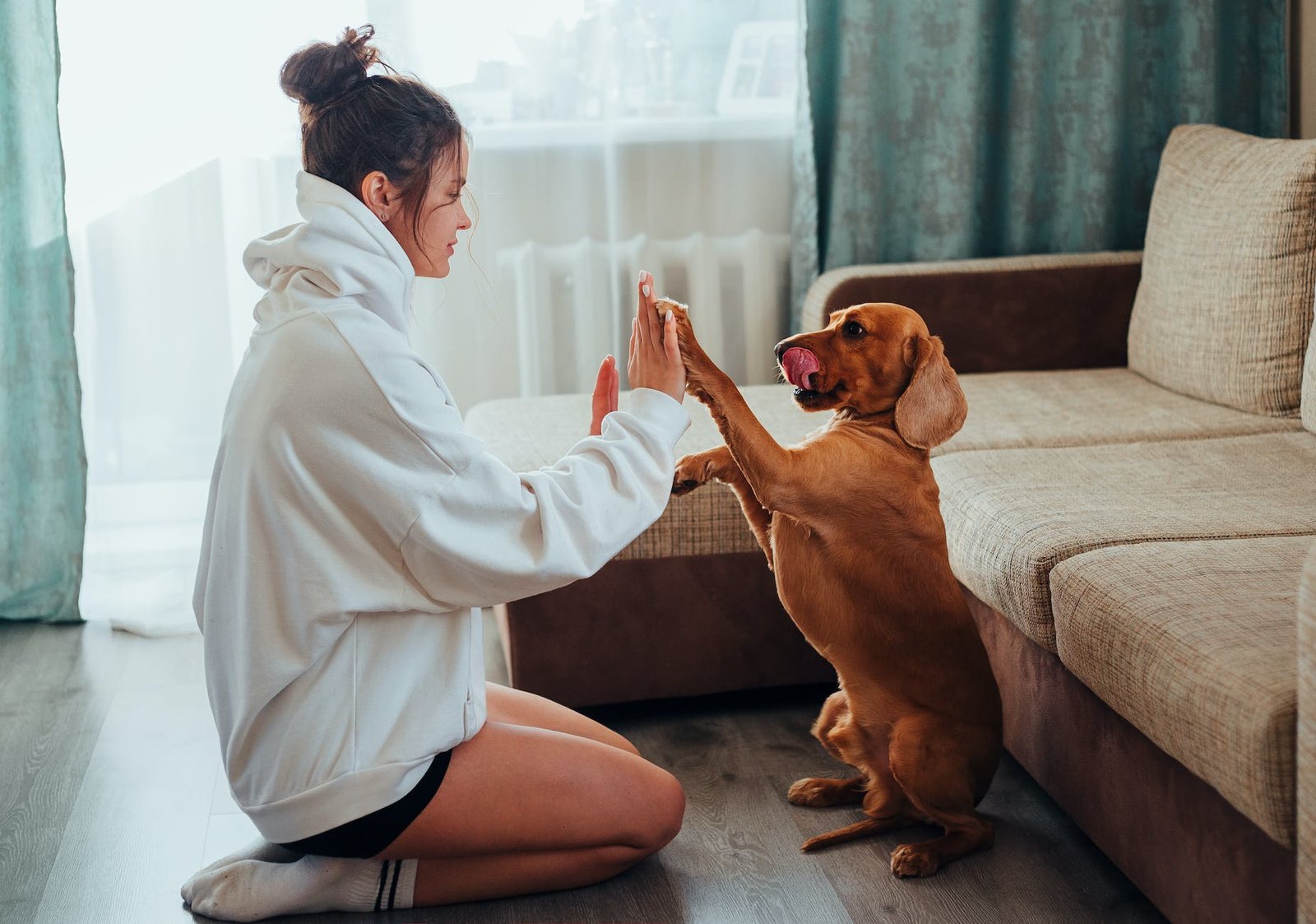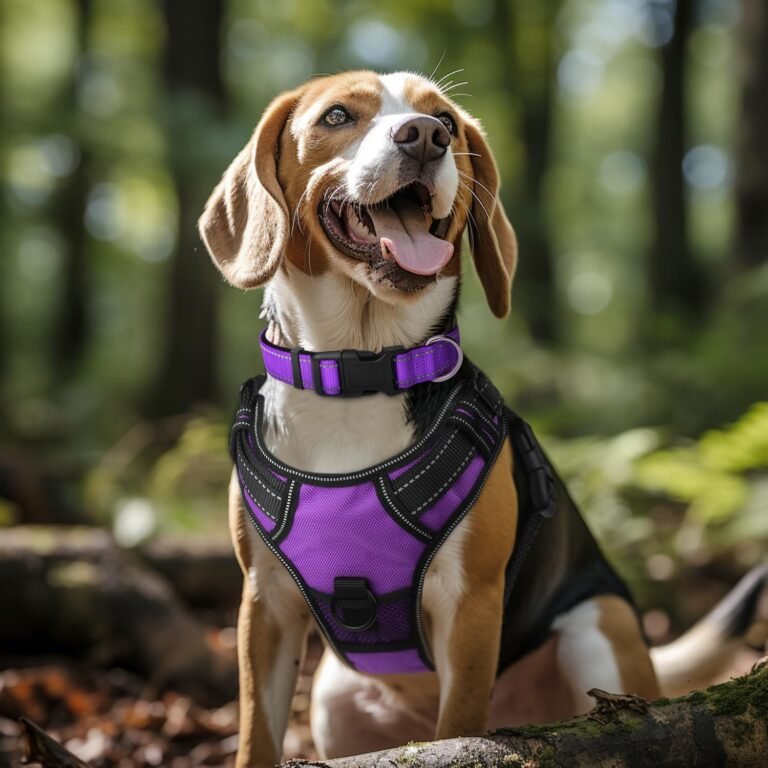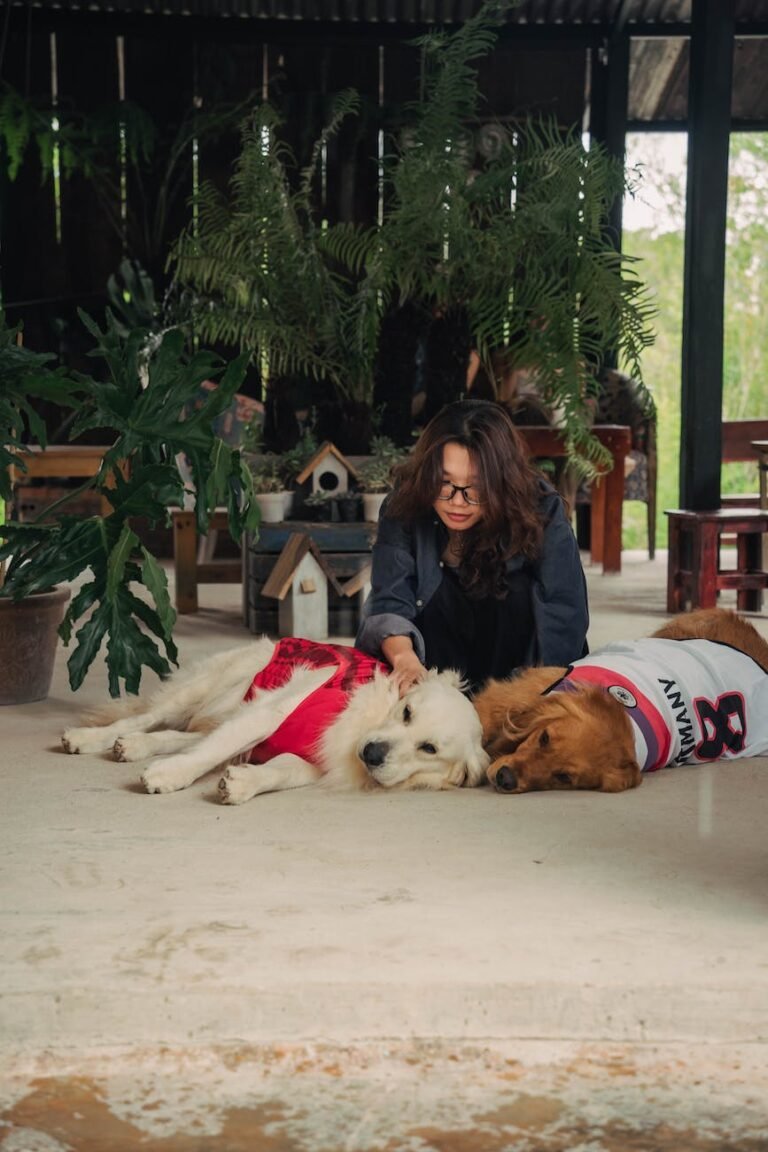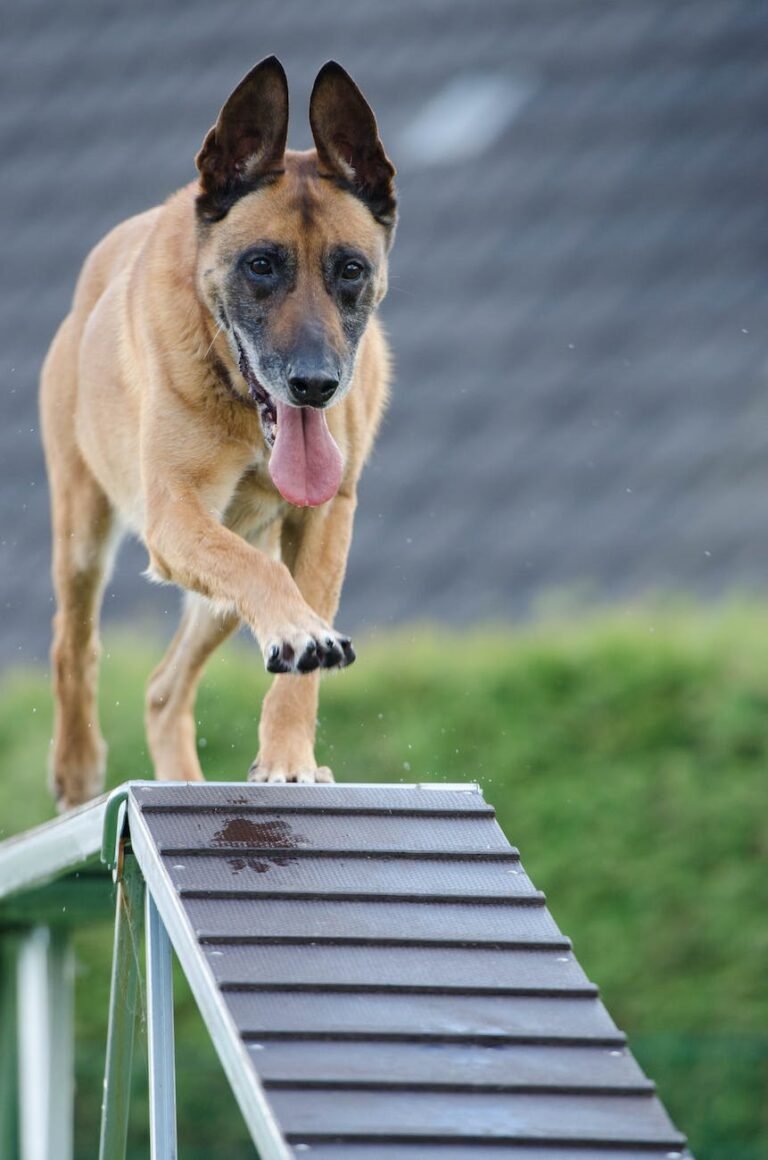Master the Art of Dog Training: Easy Tricks to Teach Your Pooch
The Power of Dog Training
Training your dog is not only a fun and rewarding experience but also an essential part of being a responsible pet owner. Teaching your dog tricks not only impresses your friends and family but also provides numerous benefits for both you and your furry friend. Let’s explore the benefits of teaching your dog tricks and how it helps in building a strong bond between you and your pooch.
Benefits of Teaching Your Dog Tricks
Teaching your dog tricks offers a wide range of benefits beyond just entertainment. Here are a few key advantages:
-
Mental Stimulation: Engaging your dog in training exercises and teaching them tricks stimulates their mind. Dogs are intelligent animals that thrive on mental challenges. By teaching them tricks, you provide mental stimulation that helps prevent boredom and can even reduce behavioral issues.
-
Physical Exercise: Many tricks involve physical movement and coordination, providing your dog with additional exercise. This is especially beneficial for high-energy breeds that require regular physical activity.
-
Improved Focus and Obedience: Training your dog to perform tricks helps improve their focus and overall obedience. As they learn to follow commands and respond to cues, their listening skills and ability to concentrate on tasks improve.
-
Bonding and Communication: Training is an excellent opportunity to strengthen the bond between you and your dog. Spending quality time together, working towards a common goal, and rewarding their achievements builds trust and enhances the relationship between you and your furry companion.
-
Socialization: Teaching your dog tricks often involves exposing them to different environments, people, and situations. This exposure helps improve their socialization skills, making them more confident and comfortable in various settings.
Building a Strong Bond Through Training
Training your dog is not just about teaching them tricks; it’s about building a strong and lasting bond. When you engage in training sessions, you establish yourself as the leader and earn your dog’s trust and respect. This bond is based on positive reinforcement and mutual understanding.
Through consistent training, you and your dog communicate effectively, understanding each other’s cues and signals. This communication builds a foundation of trust, making your dog more responsive to your commands and receptive to your guidance.
It’s important to approach training with patience, consistency, and love. Using positive reinforcement techniques, such as treats, praise, and clicker training, helps create a positive learning environment for your dog. Positive reinforcement focuses on rewarding desired behaviors, encouraging your dog to repeat them.
By investing time and effort into training your dog and teaching them tricks, you not only enhance their well-being but also create a strong bond that will strengthen your relationship for years to come.
Now that we understand the benefits of teaching your dog tricks and how it helps in building a strong bond, let’s move on to the next section and explore the foundation of dog training – setting basic training commands. For beginners in dog training, our article on dog training for beginners provides valuable insights to get you started.
Getting Started with Dog Training
To embark on a successful dog training journey, it’s important to establish a solid foundation and understand the key principles of effective training. In this section, we will explore setting the foundation with basic training commands and the importance of positive reinforcement.
Setting the Foundation: Basic Training Commands
Before diving into teaching your dog tricks, it’s crucial to establish a strong foundation with basic training commands. These commands lay the groundwork for more advanced tricks and help create a well-behaved and obedient pooch.
Here are a few essential basic training commands to start with:
| Training Command | Description |
|---|---|
| Sit | Teaching your dog to sit on command is one of the first and most fundamental commands. It helps with impulse control and is the building block for many other tricks. |
| Stay | The “stay” command teaches your dog to remain in a specific position until released. This command is useful for situations where you need your dog to stay put, such as when guests arrive or during walks. |
| Come | Teaching your dog to come when called is essential for their safety and your peace of mind. This command is particularly important in outdoor environments or when your dog is off-leash. |
| Down | The “down” command teaches your dog to lie down on command. It’s a valuable command for calming excitable dogs or when you need your dog to stay in a relaxed position. |
Remember, consistency is key when teaching these commands. Use clear and concise verbal cues, paired with hand signals if desired, to help your dog understand what is expected of them. For more detailed guidance on basic training commands and techniques, check out our article on dog training for beginners.
Positive Reinforcement: Key to Successful Training
Positive reinforcement is a highly effective training method that relies on rewarding desired behaviors to encourage their repetition. This approach focuses on rewarding your dog with treats, praise, or play whenever they perform the desired action correctly.
By using positive reinforcement, you create a positive association for your dog, making training a fun and rewarding experience. It strengthens the bond between you and your furry companion and motivates them to learn and please you. Additionally, positive reinforcement promotes a happy and confident dog, as it avoids the use of punishment or fear-based techniques.
One popular tool for positive reinforcement training is a clicker. A clicker is a small handheld device that makes a distinct sound when pressed. It helps to mark the exact moment your dog performs the desired behavior, signaling that a reward is coming. To learn more about clicker training and its benefits, refer to our article on clicker training for dogs.
Remember to keep training sessions short, fun, and consistent. Dogs thrive on repetition and consistency, so regular practice is essential. Break down each trick into small steps, rewarding your dog for each successful attempt. For additional inspiration and ideas for fun tricks to teach your dog, take a look at our article on fun tricks to teach your dog.
By focusing on setting the foundation with basic training commands and utilizing positive reinforcement techniques, you’ll establish a strong training framework for teaching your dog a variety of tricks. Stay patient, be consistent, and most importantly, enjoy the journey of training and bonding with your beloved pooch.
Easy Tricks to Teach Your Pooch
Teaching your dog tricks not only provides mental stimulation but also strengthens the bond between you and your furry friend. Here are some easy tricks that you can start teaching your pooch today:
Sit and Stay
The “sit” and “stay” commands are fundamental for every dog. Begin by luring your dog into a sitting position using a treat or a verbal cue. Once your dog is sitting, reward them with praise and a treat. Gradually introduce the “stay” command by taking a step back and using a hand signal to indicate that they should remain in the sitting position. Practice this trick in a quiet, distraction-free environment before gradually increasing the level of difficulty.
Shake Hands
Teaching your dog to shake hands is a classic trick that never fails to impress. Start by extending your hand towards your dog’s paw and saying “shake” or any other verbal cue of your choice. As soon as your dog lifts their paw to touch your hand, reward them with praise and a treat. Repeat this process until your dog becomes familiar with the command. Remember to always use positive reinforcement and reward-based training methods to encourage your dog’s cooperation. For more information on positive reinforcement training, check out our article on positive reinforcement dog training.
Lie Down
The “lie down” command is a useful trick to teach your dog. Begin with your dog in a sitting position, then hold a treat close to their nose and gradually move it towards the ground. As your dog follows the treat, they will naturally lower their body into a lying position. Once your dog is lying down, reward them with praise and a treat. Practice this command regularly, gradually phasing out the treat and relying more on verbal cues and hand signals.
Roll Over
Rolling over is a fun and impressive trick that will surely delight both you and your dog. Start by having your dog lie down on their side. Hold a treat close to their nose and slowly move it in a circular motion towards their shoulder. Your dog will naturally roll onto their back to follow the treat. Once they complete the roll, reward them with praise and a treat. This trick may take some time and patience, so break it down into small steps and practice consistently.
Play Dead
Teaching your dog to play dead is a crowd-pleaser. Begin with your dog in a lying down position. Gently roll them onto their side and use a treat to guide them onto their back. As they lie on their back, reward them with praise and a treat. It may be helpful to use a verbal cue such as “bang” or “play dead” to associate the trick with the action. Practice this trick in short sessions, gradually phasing out the treat rewards.
Give Paw
The “give paw” or “shake” command is a variation of the shake hands trick. Start by having your dog in a sitting position. Extend your hand towards their paw and use a verbal cue such as “give paw” or “shake.” When your dog lifts their paw to touch your hand, reward them with praise and a treat. With consistent practice, your dog will learn to offer their paw whenever you give the command.
Remember to keep training sessions short and fun, using positive reinforcement to motivate your dog. If you’re new to dog training, check out our article on dog training for beginners for more tips and guidance. Stay patient, consistent, and enjoy the process of teaching your dog these easy tricks. Happy training!
Training Techniques and Tips
When it comes to teaching your dog tricks, employing effective training techniques can make the process more enjoyable and successful. Here are some key techniques and tips to help you master the art of training your pooch.
Consistency and Patience
Consistency is vital in dog training. Establishing a consistent routine and using the same command words and hand signals will help your dog understand what is expected of them. Consistency also applies to your actions and reactions. Stay calm, patient, and positive throughout the training process. Dogs respond well to positive reinforcement, so avoid punishment-based training methods that can cause fear or anxiety in your furry friend.
Reward-Based Training Methods
Reward-based training methods are highly effective in teaching dogs new tricks. Positive reinforcement involves rewarding your dog for performing the desired behavior. This can be done through treats, praise, or playtime. By associating the desired behavior with positive rewards, your dog will be motivated to repeat the behavior in the future. For more information on positive reinforcement training, check out our article on positive reinforcement dog training.
Breaking Down Tricks into Small Steps
Breaking down tricks into smaller, manageable steps is crucial for successful training. Dogs learn best when tasks are broken down into simple actions. For example, when teaching the “shake hands” trick, start by rewarding your dog for lifting their paw, then gradually progress to rewarding them for extending their paw towards your hand. By taking it step by step, your dog will build a solid foundation for learning more complex tricks. Remember to be patient and celebrate each small achievement along the way.
Practice Makes Perfect
Consistent practice is key to mastering any trick. Set aside regular training sessions with your dog, keeping them short and enjoyable. Dogs have a limited attention span, so aim for several short sessions throughout the day rather than one long session. Be sure to vary the training environment to help your dog generalize the learned behavior to different settings. The more you practice, the more your dog will reinforce the learned behaviors and become proficient in performing the tricks. For more fun tricks to teach your dog, visit our article on fun tricks to teach your dog.
By applying these training techniques and tips, you can effectively teach your dog a variety of tricks. Remember to maintain consistency, use positive reinforcement, break down tricks into manageable steps, and practice regularly. With time and patience, you and your furry friend will build a strong bond and enjoy the rewarding experience of mastering new tricks together. If you’re new to dog training, our article on dog training for beginners provides a helpful starting point.
Troubleshooting Common Challenges
Training your dog to perform tricks can come with its fair share of challenges. In this section, we will address some common hurdles you may encounter during the training process and provide tips on how to overcome them.
Dealing with Distractions
Distractions can make it difficult for your dog to focus during training sessions. Whether it’s the presence of other people, animals, or even interesting scents, distractions can divert your dog’s attention away from the task at hand.
To deal with distractions effectively, consider the following tips:
- Start training in a quiet and familiar environment, free from excessive external stimuli.
- Gradually introduce distractions as your dog becomes more proficient in performing the trick.
- Use treats and praise as rewards to reinforce positive behavior and maintain focus.
- Practice in different locations to help your dog generalize the learned behavior in various settings.
- Utilize clicker training for dogs to establish clear communication and mark desired behaviors.
Remember, patience and consistency are key when addressing distractions. With time and practice, your dog will learn to stay focused, regardless of the surrounding distractions.
Overcoming Fear or Resistance
Some dogs may exhibit fear or resistance during the training process, making it challenging to teach them new tricks. It’s essential to create a safe and supportive environment to help your dog build confidence and overcome any fears.
Here are a few strategies to overcome fear or resistance:
- Break down the trick into smaller steps, gradually increasing the difficulty as your dog becomes more comfortable.
- Use positive reinforcement techniques, such as treats and praise, to reward and encourage your dog’s progress.
- Avoid using force or punishment, as this can exacerbate fear and create a negative association with training.
- Seek professional guidance from a positive reinforcement dog training expert if your dog’s fear persists or worsens.
By providing a calm and nurturing environment, you can help your dog overcome fear or resistance and build a positive association with training.
Addressing Behavioral Issues
During the training process, you may come across behavioral issues that can hinder your dog’s progress. These issues can range from excessive barking to jumping or even aggression. It’s important to address these problems promptly and effectively to ensure a harmonious training experience.
Consider the following tips when addressing behavioral issues:
- Identify the root cause of the behavior and address any underlying medical or psychological factors.
- Seek professional guidance from a qualified dog trainer or behaviorist to develop a tailored training plan.
- Focus on positive reinforcement and reward-based training methods to encourage desired behaviors.
- Practice consistency and patience in implementing the training techniques to see long-term results.
- Incorporate mental and physical stimulation into your dog’s routine to prevent boredom and reduce behavioral issues.
Remember, addressing behavioral issues may require time and effort. Stay committed to the training process and celebrate small victories along the way.
By tackling common challenges such as distractions, fear or resistance, and behavioral issues, you can enhance the effectiveness of your dog training sessions. With patience, persistence, and the right techniques, you’ll be well on your way to teaching your pooch an array of fun tricks. For more ideas, check out our article on fun tricks to teach your dog.







